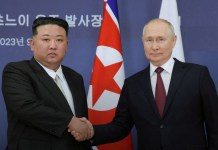After the Pentagon’s annual report on China declared the People’s Liberation Army Navy (PLAN) as “the largest navy in the world“ and highlighted its increasing capabilities, the former director of National Security Council Secretariat believes that such forecasts and warnings did not affect Indian decision to counter Chinese belligerence in Ladakh.
Five Arunachal Youths ‘Kidnapped’ By PLA Troops Are Indian Spies – China
Tara Kartha in her analysis argued that Chinese aggressiveness against India is “superfluous” with respect to ongoing conflict on the Line of Actual Control (LAC) in Ladakh. She added that although China is a power to reckon with, it is not “quite the dragon that the Pentagon – or Beijing – paints it to be.

The report to the US Congress said that the People’s Republic of China (PRC) has “an overall battle force of approximately 350 ships and submarines including over 130 major surface combatants. In comparison, the U.S. Navy’s battle force is approximately 293 ships as of early 2020” but the report failed to give a detailed ship by ship comparison which would have assessed the capabilities of the naval ships possessed by each nation.
Experts have pointed out that while China dominates the number of naval ships but the US Navy is superior in terms of its nuclear-powered submarines.
Talking about the US Navy’s Columbia class submarine, according to Kris Osborn of National Interest, “while there is likely little known about the exact technological make-up of the emerging Chinese Jin-class SSBN, it might not rival the emerging U.S. Columbia-class submarine.”
This was in reference to the comparison drawn between the Chinese Jin-class SSBN and US Navy’s Columbia class submarine. “After all, the new, now-in-development Columbia class may be the quietest undersea boat ever to exist,” he added.
Kartha pointed out that the exaggeration of the ‘Chinese threat’ may be counter-productive in keeping that country in check especially when the idea of China’s ‘rising’ originated in Beijing itself. She emphasised that this perception is then used for ‘diplomatic dissuasion’ by Beijing.
David Axe of Forbes supported the argument saying that the Pentagon report on China “mostly portrays China as a seemingly unbeatable martial monolith with limitless resources and ambitions and few viable rivals.”
He also asserted that the US has a history of “Pentagon’s propaganda campaign” that was earlier employed against the Soviet Union which collapsed even though the 1989 Pentagon report claiming its might.
Chinese military analyst, Wei Dongxu, quoted by Global Times (GT) Pentagon’s report seeks an increased budget from the US Congress “by portraying the Chinese army as threatening.”
Unlike the US, Indian Forces have faced the Chinese PLA head-on without undermining its strength. Kartha emphasised that the Indian Armed Forces displayed resolution in defence by recognising that they are confronting a powerful adversary which they once thought could be befriended.
This was recently demonstrated when a clash broke out between the Indian and Chinese troops on the night of August 29. The Indian Army thwarted PLA’s attempt to unilaterally change the facts on the ground at the southern bank of Pangong Tso in eastern Ladakh.
“Indian troops pre-empted this PLA activity on the Southern Bank of Pangong Tso Lake, undertook measures to strengthen our positions and thwart Chinese intentions to unilaterally change facts on the ground,” said Colonel Aman Anand (PRO, Indian Army).
Kartha concluded saying that analysts need to break down the myth of an indomitable China, without dismissing the very real threat that it is today.




